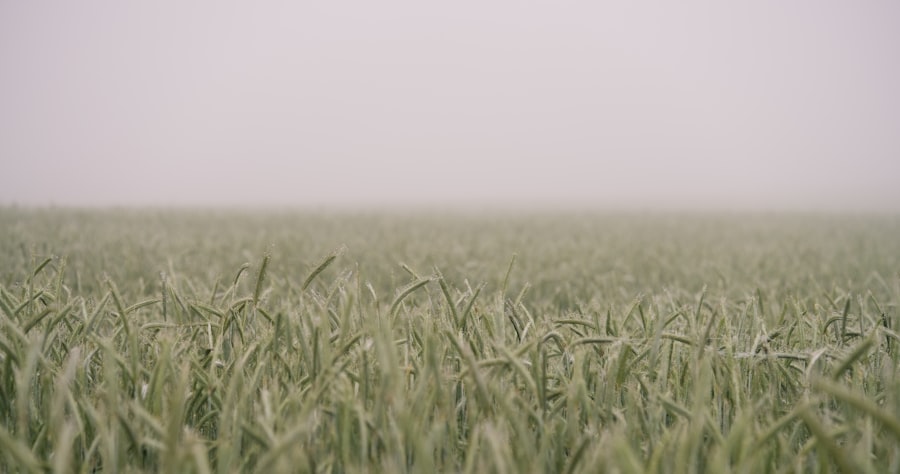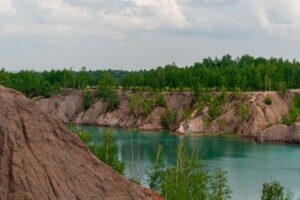Grass edging serves as a crucial element in landscape design, providing both aesthetic appeal and functional benefits. By creating a clear boundary between grass and other areas, such as flower beds, pathways, or driveways, edging helps to define spaces within a garden or yard. This demarcation not only enhances the visual structure of the landscape but also contributes to the overall organization of the outdoor environment.
A well-defined edge can elevate the appearance of a garden, making it look more polished and professionally maintained. Moreover, grass edging plays a significant role in promoting healthy lawn growth. By establishing a barrier, it prevents grass from encroaching into flower beds or other landscaped areas, which can lead to competition for nutrients and water.
This separation is particularly important for maintaining the integrity of delicate plants that may struggle to thrive if overshadowed by aggressive grass species. Additionally, edging can help to control the spread of weeds, as it creates a physical barrier that can deter their growth in unwanted areas. Thus, the importance of grass edging extends beyond mere aesthetics; it is integral to the health and sustainability of the entire landscape.
Key Takeaways
- Grass edging is important for defining and maintaining clean and neat borders in a lawn or garden.
- Types of edging tools include manual tools like spades and shears, as well as power tools like edging machines and trimmers.
- Choosing the right edging material depends on factors like durability, flexibility, and aesthetic appeal.
- Techniques for clean and straight edges include using a guide, cutting at the right angle, and maintaining a steady hand.
- Maintaining edges for a neat appearance involves regular trimming, removing overgrown grass and weeds, and redefining edges as needed.
Types of Edging Tools
When it comes to grass edging, a variety of tools are available to suit different preferences and landscaping needs. One of the most common tools is the manual edger, which typically features a sharp blade attached to a long handle. This tool allows for precise cutting along the edge of the lawn, making it ideal for those who prefer a hands-on approach.
Manual edgers come in various designs, including half-moon and straight blade types, each offering unique advantages depending on the desired edge style. For those seeking efficiency and ease of use, power edgers are an excellent alternative. These motorized tools can significantly reduce the time and effort required for edging tasks.
Power edgers are available in gas-powered and electric models, with gas-powered versions often providing more power for larger areas. Electric edgers are quieter and more environmentally friendly, making them suitable for residential use. Additionally, some models come equipped with adjustable depth settings, allowing users to customize their edging experience based on soil conditions and desired edge depth.
Choosing the Right Edging Material

Selecting the appropriate edging material is essential for achieving both functionality and visual appeal in landscaping projects. Various materials are available, each offering distinct characteristics that can influence the overall look and durability of the edge. One popular option is metal edging, which provides a sleek and modern appearance while being highly durable.
Steel or aluminum edging can withstand harsh weather conditions and resist rusting, making it an excellent choice for long-term use. Another common material is plastic edging, which is lightweight and easy to install. While it may not offer the same level of durability as metal options, plastic edging is available in various colors and styles, allowing homeowners to customize their landscape according to personal preferences.
For a more natural look, wood edging can be employed; however, it requires regular maintenance to prevent rot and decay. Stone or brick edging provides a classic aesthetic and can be used to create intricate designs, but installation may require more effort and skill compared to other materials.
Techniques for Clean and Straight Edges
| Technique | Description |
|---|---|
| Using a straight edge | Using a ruler or other straight edge to guide your cutting or drawing for clean and straight edges. |
| Sharp cutting tools | Using sharp scissors or knives to ensure clean and precise edges. |
| Proper alignment | Ensuring proper alignment of materials before cutting or drawing to achieve straight edges. |
| Practice and patience | Practicing the techniques and being patient to achieve clean and straight edges in your work. |
Achieving clean and straight edges is essential for creating a polished look in any landscape design.
By laying down a flexible hose or string along the intended path, homeowners can visualize the curve or straight line they wish to create.
This method allows for adjustments before any cutting takes place, ensuring that the final edge aligns with the overall design vision. Once the outline is established, using an edger tool—whether manual or powered—can help achieve precision in cutting. For manual edgers, it’s important to apply consistent pressure while moving along the edge to ensure an even cut.
For powered edgers, maintaining a steady pace will help prevent uneven edges or gouges in the soil. After cutting, it’s beneficial to remove any excess grass or debris from the edge to enhance its appearance further. Regularly checking the edge for any irregularities will help maintain its neatness over time.
Maintaining Edges for a Neat Appearance
Maintaining clean edges is an ongoing process that requires regular attention to keep landscapes looking their best. One effective strategy is to schedule routine edging sessions throughout the growing season. Depending on climate and grass growth rates, this may mean edging every few weeks during peak growth periods.
Consistency is key; regular maintenance prevents grass from encroaching into flower beds or pathways and helps maintain the defined lines that contribute to an organized appearance. In addition to regular edging, mulching can be an effective way to maintain neat edges around flower beds or garden areas. Applying mulch not only suppresses weed growth but also provides a clear visual boundary between different landscape elements.
Furthermore, using mulch can help retain moisture in the soil and improve overall plant health. Homeowners should also consider seasonal adjustments; for instance, during fall cleanup, it may be beneficial to redefine edges after leaves have fallen or after winter snow has melted to ensure that they remain sharp and well-defined.
Edging Around Landscaping Features

Edging around landscaping features such as trees, shrubs, or decorative elements requires careful planning and execution to enhance their visual appeal while maintaining functionality. When creating edges around trees, it’s essential to consider the root system; cutting too close can damage roots and affect tree health. A circular edge that follows the natural shape of the tree canopy often works best, allowing for adequate space while still providing a defined boundary.
For flower beds or shrub borders, using curved edges can add an organic feel to the landscape design. Curved edges soften the transition between different areas of the yard and can create a more inviting atmosphere. When installing edging around these features, it’s important to ensure that the material used complements both the plants and other elements in the landscape.
For example, using natural stone around a rustic garden can enhance its charm while providing a sturdy barrier against grass encroachment.
Troubleshooting Common Edging Problems
Despite careful planning and execution, common problems may arise during grass edging that can detract from its effectiveness. One frequent issue is uneven edges caused by inconsistent cutting techniques or improper tool use. To address this problem, homeowners should regularly assess their edges for irregularities and make necessary adjustments using their chosen edger tool.
If an edge appears jagged or uneven after cutting, retracing the line with an edger can help restore its clean appearance. Another common challenge is grass regrowth along edges, which can lead to a messy appearance over time. To combat this issue, applying a pre-emergent herbicide along the edge can help prevent grass from encroaching into flower beds or pathways.
Additionally, regular maintenance sessions will keep edges looking sharp and prevent overgrowth from becoming unmanageable. Homeowners should also be mindful of soil erosion; if soil begins to wash away from edges during heavy rain, reinforcing them with additional material or installing drainage solutions may be necessary.
Tips for Efficient and Effective Grass Edging
To maximize efficiency while ensuring effective grass edging results, homeowners should consider several practical tips. First and foremost, investing in quality tools tailored to specific needs can make a significant difference in performance and ease of use. Whether opting for manual or powered tools, selecting those that are well-reviewed for durability and effectiveness will pay off in terms of time saved and results achieved.
Planning ahead is another critical aspect of efficient edging. Before starting any project, homeowners should take time to assess their landscape layout and determine where edges need to be defined or maintained. Creating a schedule for regular maintenance will help ensure that edging tasks do not become overwhelming over time.
Additionally, enlisting help from family members or neighbors can make larger projects more manageable while fostering community engagement in outdoor spaces. In conclusion, grass edging is an essential component of landscape design that enhances both aesthetics and functionality.
If you are interested in learning more about landscaping and gardening, you may want to check out this article on exploring psychology careers, courses, colleges, and certifications. Understanding the principles of psychology can help you better understand the needs and preferences of your clients when it comes to designing their outdoor spaces, including important details like grass edging. By incorporating psychological insights into your landscaping work, you can create more personalized and appealing outdoor environments for your clients.
FAQs
What is grass edging?
Grass edging is the process of creating a defined border between a lawn and other landscaping elements, such as flower beds, walkways, or driveways. This can be achieved using various materials, such as metal, plastic, or stone, to create a clean and polished look for the lawn.
Why is grass edging important?
Grass edging serves both practical and aesthetic purposes. It helps to prevent grass from encroaching into other areas of the garden, such as flower beds or pathways, and also creates a neat and tidy appearance for the lawn.
What are the different types of grass edging materials?
There are several materials that can be used for grass edging, including metal, plastic, wood, stone, and concrete. Each material has its own advantages and can be chosen based on the desired aesthetic and durability.
How do you install grass edging?
The installation process for grass edging varies depending on the chosen material. Generally, it involves digging a trench along the desired edge, placing the edging material into the trench, and securing it in place. Some materials may require additional steps, such as anchoring or connecting pieces together.
What are the benefits of using grass edging in landscaping?
Grass edging helps to maintain a clean and organized appearance for the lawn and surrounding landscaping elements. It also helps to reduce maintenance by preventing grass from spreading into unwanted areas, such as flower beds or walkways. Additionally, it can add visual interest and definition to the overall landscape design.
























+ There are no comments
Add yours